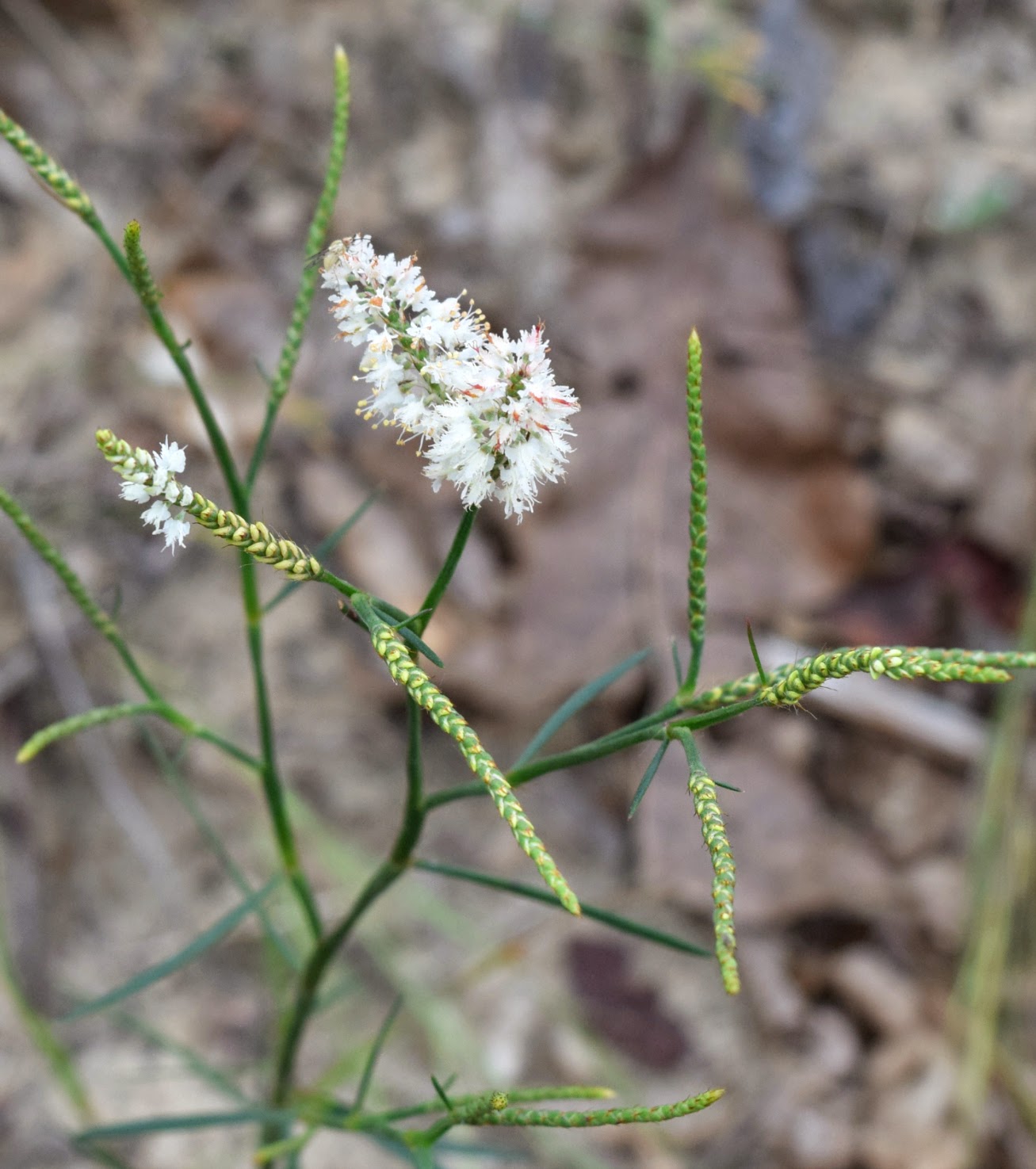Sandhill jointweed
(Polygonella fimbriata)

Description
Herbs,-annual, gynomonoecious, 1-6 dm.-Stems-erect, simple or sparingly branched proximally, scabrous or, sometimes, glabrous proximally.-Leaves-persistent; ocrea margins ciliate; blade linear to falcate, (10-)19-36(-50) - (0.6-)1-1.5(-3) mm, base tapered, margins not hyaline, apex acuminate, minutely scabrous.-Inflorescences-(5-)10-24(-30) mm; ocreola encircling rachis, only the base adnate to rachis, apex acuminate.-Pedicels-spreading in anthesis and fruit, 0.1-0.7 mm, as long as or much longer than subtending ocreola.-Flowers-bisexual or some pistillate, these usually distal; outer tepals loosely appressed in anthesis and fruit, pink with white margins, often drying orange, ovate, 1.1-2.3 mm in anthesis, margins erose; inner and transitional tepals loosely appressed in anthesis and fruit, pink with white margins, often drying orange, oblong, 1.2-2.2 mm in anthesis, margins deeply fringed; filaments monomorphic; anthers pink; styles and stigmas 0.6-1.3 mm in anthesis.-Achenes-included or exserted, yellow-brown, 3-gonous, 1.5-2.5 - 1-1.5 mm, shiny and smooth proximally, dull to shiny and minutely roughened distally. Flowering Jul-Oct. Sandy pine-oak forests and sandhills; 10-200 m; Ala., Fla., Ga. The chromosome number of 2n-= 32 listed for-Polygonella fimbriata-by P. O. Lewis and D. J. Crawford (1995) appears to be in error. They cited J. H. Horton (1963) as the source; Horton did not count this species.
Taxonomic tree:







